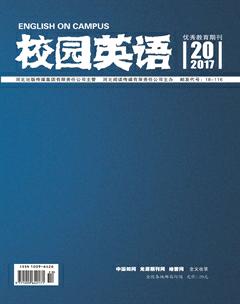Reading in Foreign Language Instruction
李昌昌
An article review of Scaffolding in second-language reading: How repetition and an auditory model help readers written by Etsuo Taguchi, Greta Gorsuch, Kistin Lems, Rory Rosszell (2016). The Journal of Reading in a Foreign Language, 28(1), 101-117.
Introduction
This article “Scaffolding in second language reading: How repetition and an auditory model help readers” explores reading fluency through the lens of scaffolding. The authors describe and explain scaffolding of the role repeated reading (RP) plays in reading. “There are two elements unique to RP that act as a form of scaffolding in reading: the repetition itself, and use of an audio model.” (Taguchi, Gorsuch, Lems, & Rosszell, 2016)Therefore, this article explores that petitioning and having students read along with an audio tape are important for second-language learners.
Taguchi et al. (2016) have noted, “reading fluency is related to automaticity, which states that good readers need to process word-recognition with minimum efforts to focus more on the comprehension.” RP is one robust approach for boosting second-language reading fluency. On repetition, Taguchi et al. (2016) have pointed out, “readers spend less time fixating on words, and revisited the previously fixated parts of the text progressively fewer time as they became more familiar with them resulted from rereading the text.” For them, using an audio model can improve readers prosodic reading behaviors, thus facilitating them better process and parse the text.
Critique
The purpose of this article is to convince readers that RP provide effective scaffolding for second-language reading. Although authors offer persuasive ideas to explain some reason about audio model, they neglect the point that some second-language learning beginners poor in reading may struggle with listening comprehension. For me, researchers should choose an audio recording above slightly students independent reading levels. Further, teachers should give students oral corrective feedback after they read along with the recording so they can adjust their reading pace, intonation and emotions etc.
Application
All ideas mentioned in this article is to achieve reading fluency efficiently, which is defined as “the ability to read rapidly with ease and accuracy, and to read with appropriate and expression and phrasing when asked to read orally or silently”. (Grabe, 2009). In out textbook, Grabe states that word recognition skills must become automatic for fluent reading to occur since our working memory is limited. The reason is that “when one starts to recognize the words automatically, the demands on working memory is lessened and the brains power can turn to the meaning of the word, the sentence, and the passage.” (Grabe, 2009)
I realize that audio-assisted RP can be helpful for second-language learners. “Prosody, which can be called as ‘music of language, is necessary in supporting syntax parsing by which readers divide words and phrases of a sentence in order to understand the syntactic structure and meaning.” (Kuhn, 2010) For example, in the sentence “The girl told the story cried”, you would think that the girl is the subject and told is the verb of this sentence, thereby the first parsing is found to be wrong and reanalyze is needed. The Implicit Prosody Theory assumes that readers project prosodic information during their silent reading even when the speech sounds are physically present. By hearing the “voice” of the text from a skillful reader, second-language learners can hear difficult vocabulary and identify when to pause and stress to have a sense of proper phrasing. Therefore, the audio model provides a bridge to the wonderful and interesting world of print.
In my future teaching, compared to the repetition itself, I prefer audio-assisted RP. Moreover, asking students to repeatedly read a selected text while listening to the text on an audio recording simultaneously. They would develop familiarity with word patterns and boost automatic word recognition, reading rate and their expression. As to the process of the audio-assisted reading, I will remind students that the clearly goal is to read along, not just listen. Then, having students read out loud along out loud with the audio recording several times until they feel comfortable reading the text unassisted, during which I will observe them to make sure that they are able to follow along give them corrective feedback.
References:
[1]Grabe,W.(2009).Reaiding in a Second Language.New York: Cambridge University Press.
[2]Kuhn,M.S.(2010).Aligning theory and assessment of reading fluency:Automaticity,prosody,and definitions of fluency.Reading Research Quarterly,230-251.
[3]Taguchi,E.,Gorsuch,G.,Lems,K.,& Rosszell,R.(2016).Scaffolding in L2 reading:How repetition and an auditory model help readers.Reading in a Foreign Language,101-117.

